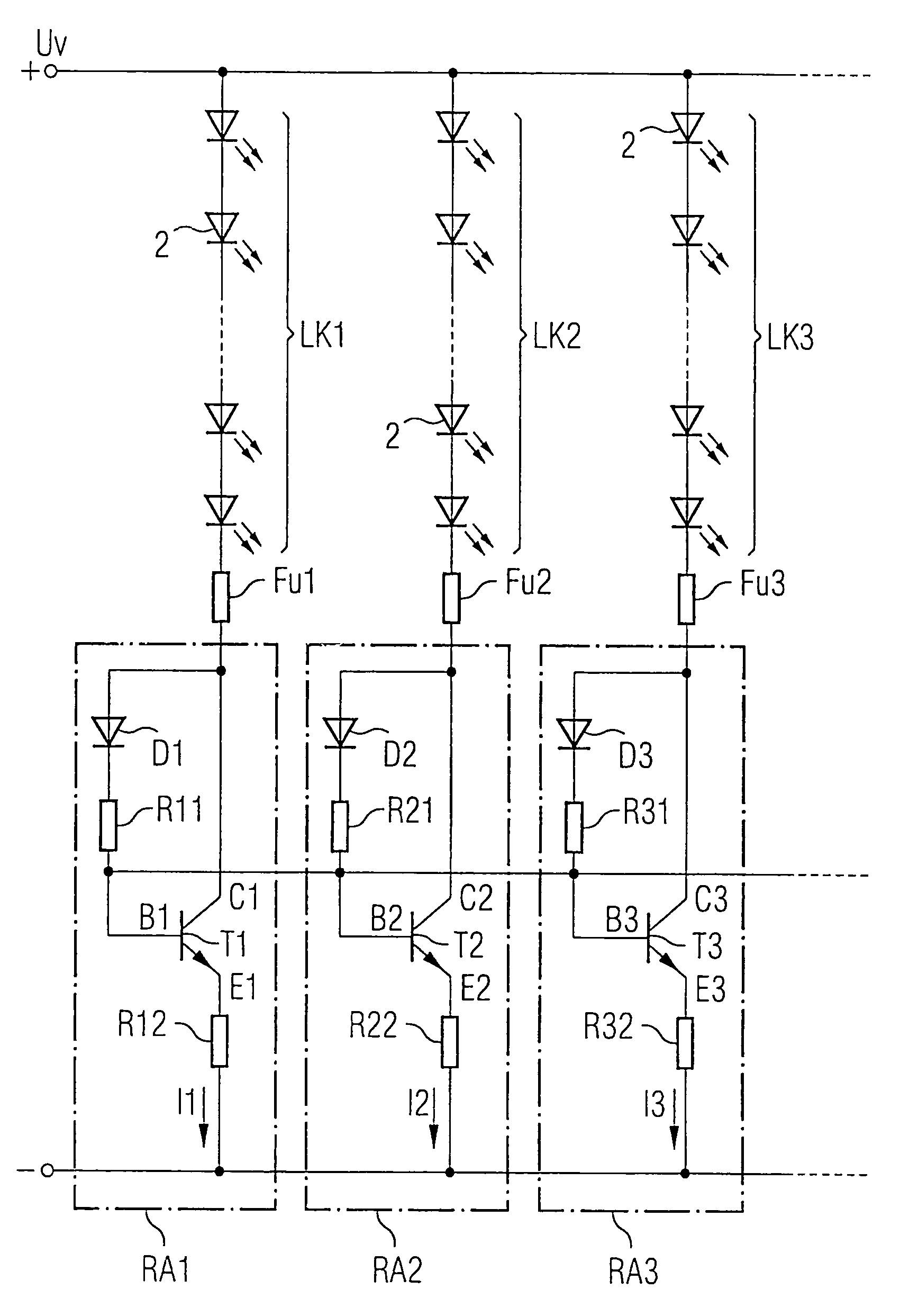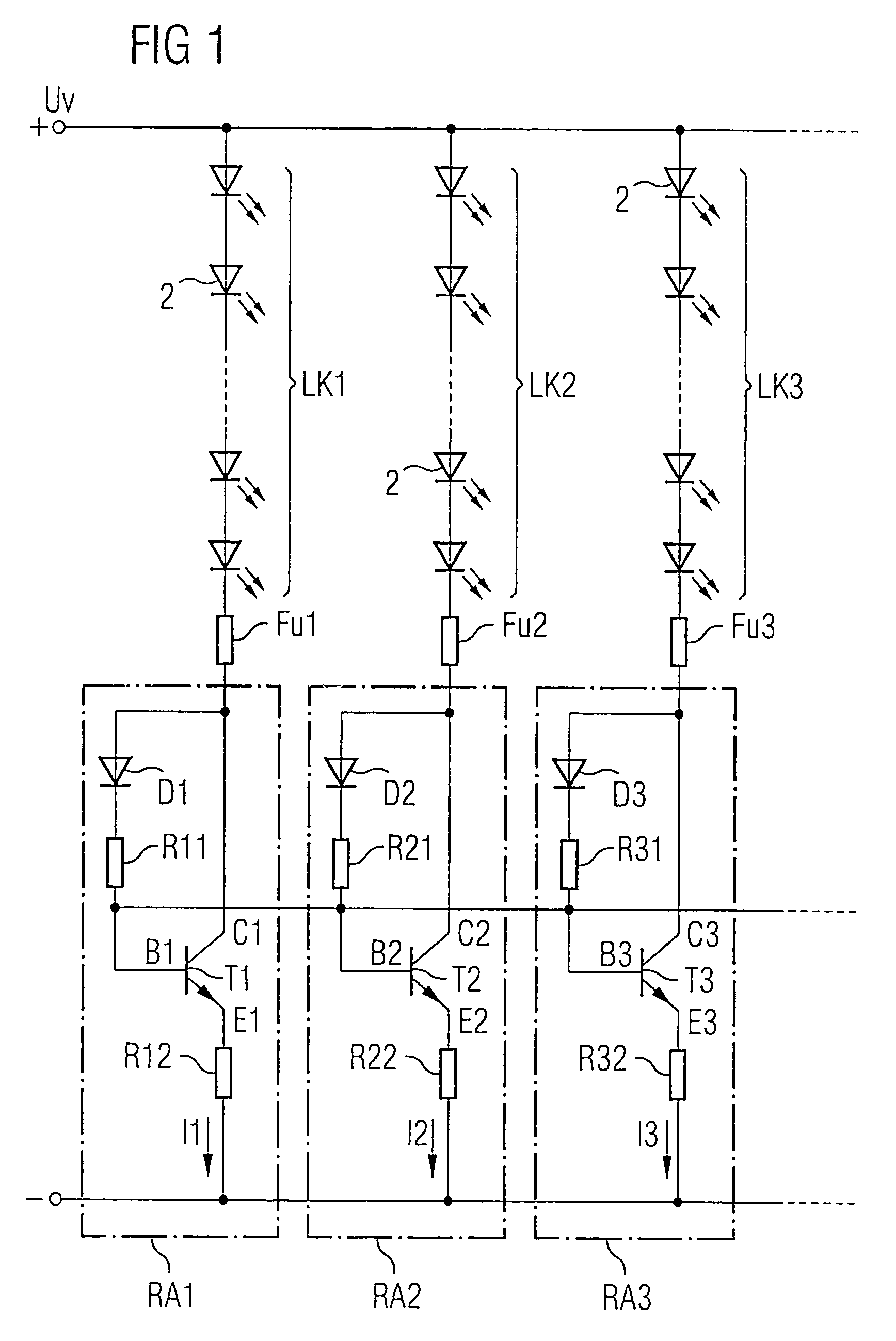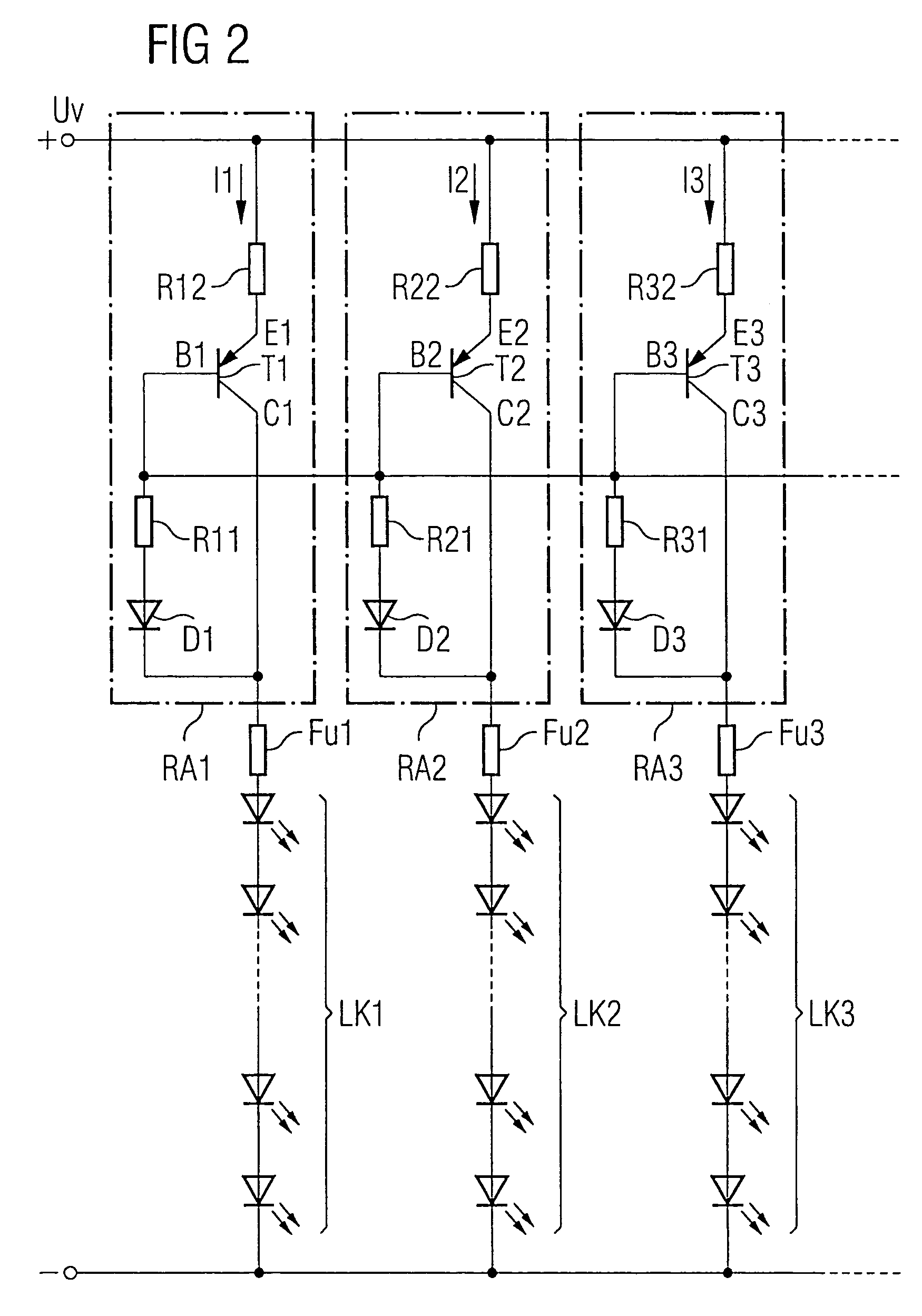Circuit for an LED array
- Summary
- Abstract
- Description
- Claims
- Application Information
AI Technical Summary
Benefits of technology
Problems solved by technology
Method used
Image
Examples
Example
[0060]A further advantage of the first embodiment of the invention or the exemplary embodiment illustrated in FIG. 1 is that a partial current is branched off for regulating purposes in each LED chain LKx. This increases the reliability and stability of the system. When using emitter resistors R12, R22, R32 with a 1% tolerance, the tolerance of the base currents is 2%, with the result that a comparatively high precision of the current distribution is obtained overall.
[0061]As already explained, the circuit arrangement in accordance with FIG. 1 can be extended by any desired number of LED chains in the manner illustrated.
[0062]The circuit shown in FIG. 1 can also be constructed in an analogous manner using pnp transistors. A corresponding second exemplary embodiment of the invention is illustrated in FIG. 2. In this case, the regulating arrangements RA1, RA2, RA3 with the transistors T1, T2, T3, the emitter resistors R12, R22, R32 and the drive circuits comprising the resistors R11, ...
Example
[0066]FIG. 4 shows a fourth exemplary embodiment in accordance with the second embodiment of the invention. As in the case of the exemplary embodiment illustrated in FIG. 1, here as well a plurality of LEDs 2 are in each case connected in series to form LED chains LK1, LK2, LK3 and the LED chains LK1, LK2, LK3 are connected, on the anode side, to the positive pole of a supply voltage and, on the cathode side, via an optional fuse Fu1, Fu2, Fu3, in each case to a regulating arrangement RA1, RA2, RA3.
[0067]The regulating arrangements RA1, RA2, RA3 once again in each case comprise a transistor Tx, the collector terminal Cx of which is connected to the corresponding LED chain LKx. The emitter terminal Ex is in each case connected via an emitter resistor Rx2 to the negative pole of the supply voltage.
[0068]As in the previous exemplary embodiments, the base terminals B1, B2, B3 of the transistors T1, T2, T3 are connected to one another and are thus at the same potential.
[0069]In contrast ...
PUM
 Login to View More
Login to View More Abstract
Description
Claims
Application Information
 Login to View More
Login to View More - R&D
- Intellectual Property
- Life Sciences
- Materials
- Tech Scout
- Unparalleled Data Quality
- Higher Quality Content
- 60% Fewer Hallucinations
Browse by: Latest US Patents, China's latest patents, Technical Efficacy Thesaurus, Application Domain, Technology Topic, Popular Technical Reports.
© 2025 PatSnap. All rights reserved.Legal|Privacy policy|Modern Slavery Act Transparency Statement|Sitemap|About US| Contact US: help@patsnap.com



